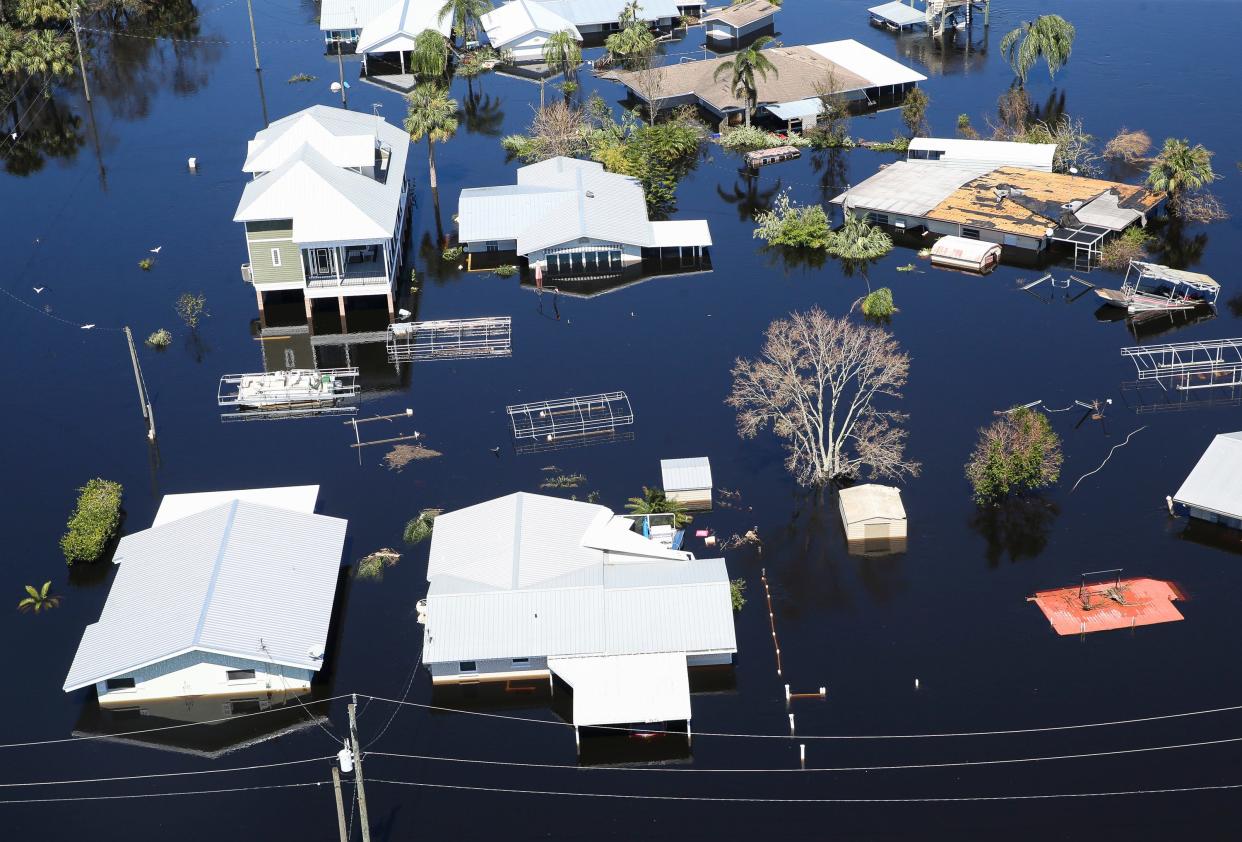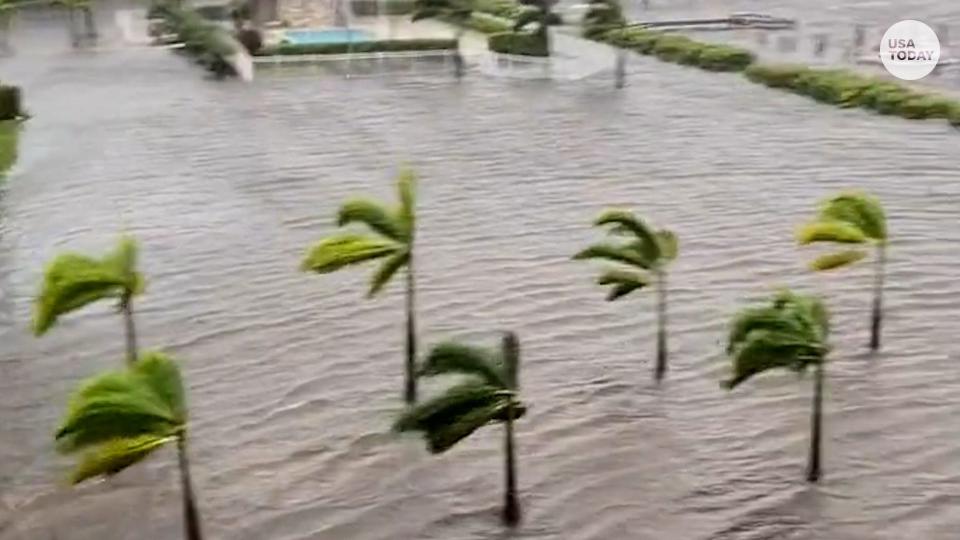Taxpayers pay 'over and over' to rebuild risky, flood-prone homes in Florida | Analysis

A new analysis and visualization tool published by the National Resource Defense Council (NRDC) found that thousands of Florida properties insured by the federal government have repeatedly flooded and been rebuilt – to the point that they’ve cost the nation hundreds of millions of dollars.
Some of the properties, which run the gamut from single family homes to businesses, have been rebuilt more than a dozen times, FEMA data provided by the NRDC shows.
One Jacksonville home currently holds the record for federally-funded rebuilds at 21 claims.
Since the start of the National Flood Insurance Program in 1978, the number of homes qualifying as severe and repetitive flood losses has grown exponentially. Florida alone has seen its numbers increase from 24 in 1982, shortly after Florida adopted the program, to more than 3,000.
Much of this is due to widening flood plains and heavier, wetter storms driven by climate change, NRDC senior policy analyst Anna Weber said.
“The bottom line is that the flooding risks to communities are increasing faster than officials are dealing with them,” Weber said.
States that have been battered by repeated hurricanes have seen the biggest jump in these flood-prone properties, with communities in Florida, Louisiana, and Texas topping the list.
According to the dataset, which is current to December of 2022, two months after Ian swept through Southwest Florida, 44,000 homes across the U.S. and its territories have qualified as severe repetitive losses under the NFIP. Florida alone had 3,550 properties that qualified as such.
According to said Anna Weber, a senior policy analyst at NRDC, a 501(c)3 nonprofit environmental advocacy group out of New York City, “this is just the tip of the iceberg when it comes to repetitive flooding in the U.S.”
$265 million in repeated flood payments in hardest hit Gulf communities
Stretching from Everglades City up to Fort Myers, dozens of homes in Southwest Florida have reached severe repetitive flood loss status and have cost the National Flood Insurance Program more than $24 million to rebuild.
And the barrier islands are some of the costliest, too. On Sanibel, just six homes cost more than $1.7 million to rebuild. On Fort Myers Beach, 25 homes were allotted $4.6 million to rebuild. The only home on Marco Island considered a repeated, severe loss, cost $95,000 to rebuild.
There are two ways a property can qualify as a severe repetitive loss, Weber said. Either flood forces an owner to file two claims that total the dollar amount of their property, or they end up filing four claims for more than $5,000 over a decade. Both mean the property qualifies as a severe, repetitive flood risk.
The Gulf coast of Florida has fared much worse than the East coast has. A typical hurricane forms in the Caribbean Sea or Gulf of Mexico and moves north and northeastward, according to the National Weather Service. Hurricanes often skim the Gulf side of the Florida peninsula, causing greater damage than the Eastern side sees.
As such, Hillsborough, Pasco, Escambia and Santa Rosa counties along with the city of St. Petersburg and the Pensacola Beach-Santa Rosa Island Authority are the hardest-hit when it comes to repetitive flood losses, and cover the bulk of the funds Florida property owners received to rebuild.
Together, they’ve cost the federal insurance program more than $265 million.
Yet, these are modestly-valued homes, data shows.
“People who have like very, very high-value homes often are not participating in the National Flood Insurance Program,” Weber said, adding that they tend to self-insure or pay a hefty premium to a private insurer, given that the federal insurance program caps policy value at $250,000.
“And so that means that the NFIP is paying over and over and over to rebuild homes in risky locations,” she said.
Who's missing from the data?

The problem is likely worse than this data even shows, Weber said.
“Most people, even if they experienced flooding … don't have flood insurance,” Weber said. Furthermore, she said, many drop out of the program because they can no longer afford the insurance premiums.
Just under 1,800 of the Florida properties that qualify for severe repetitive flood loss risk status are no longer insured with the National Flood Insurance Program.
Weber hoped the new analysis would move local, state and federal officials to act – ensuring annual funding for the National Flood Insurance Program, passing laws in Florida that require sellers to divulge flood history of a property, and enforcing building codes and zoning laws to keep new developments out of risky areas.
“Homeowners desperately need new measures that can help them afford flood insurance, reduce the risk of flooding, and give those who want it a real opportunity to move to safer ground,” Weber said. “The dramatic increase in the number of households facing costly and frustrating flood damage should be a wake-up call for lawmakers, FEMA, and state and local officials.”
This article originally appeared on Fort Myers News-Press: Florida floods cost feds hundreds of millions in rebuild costs

